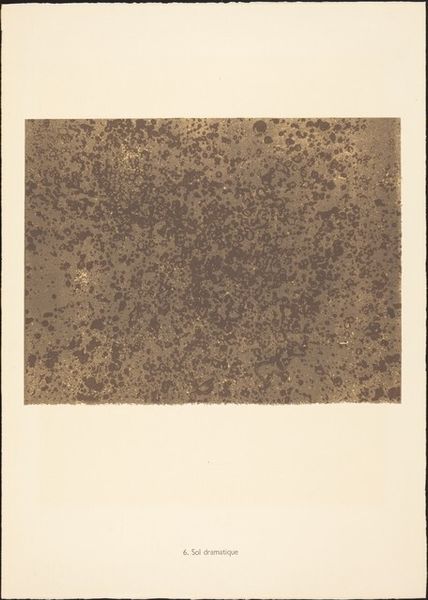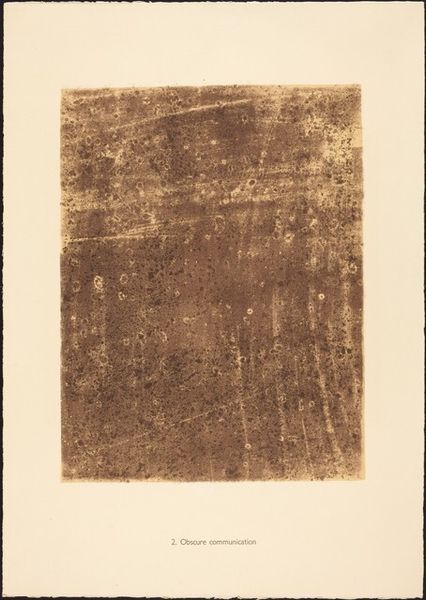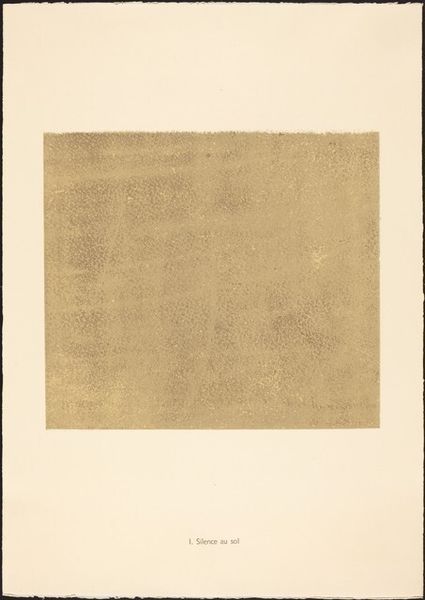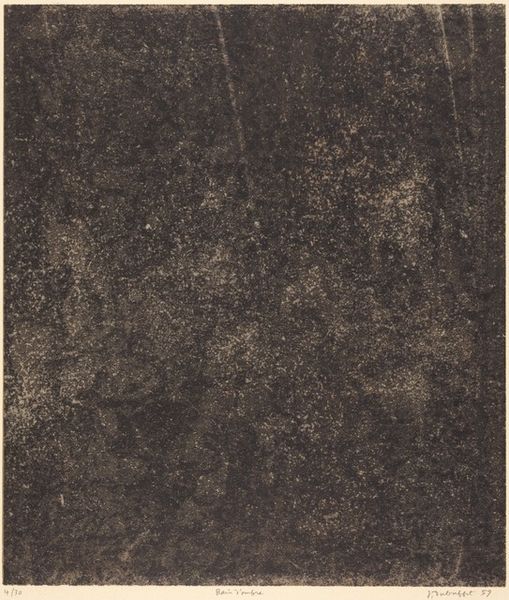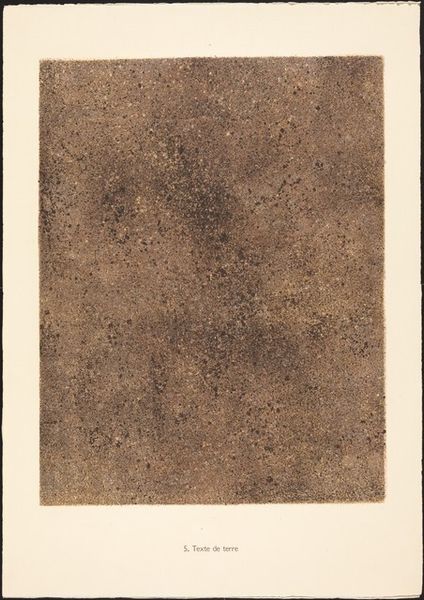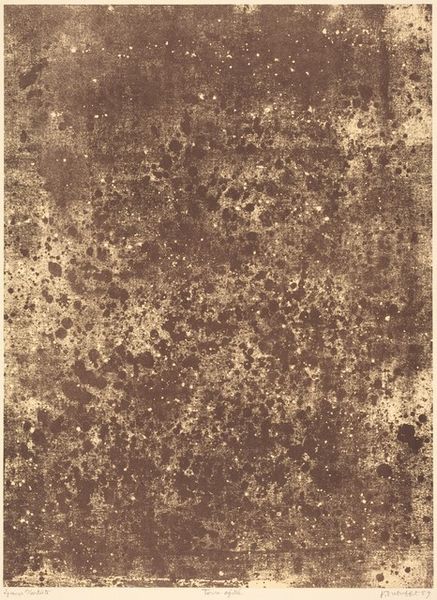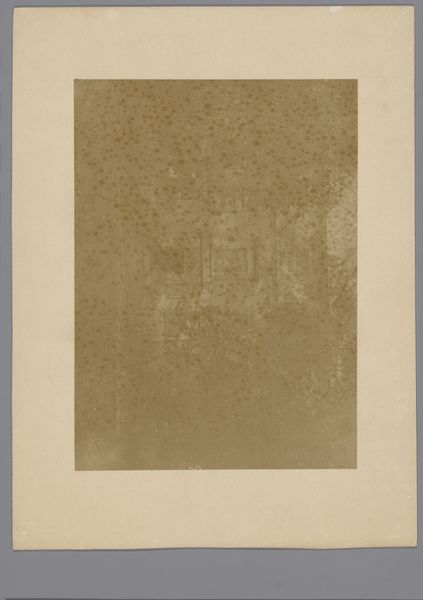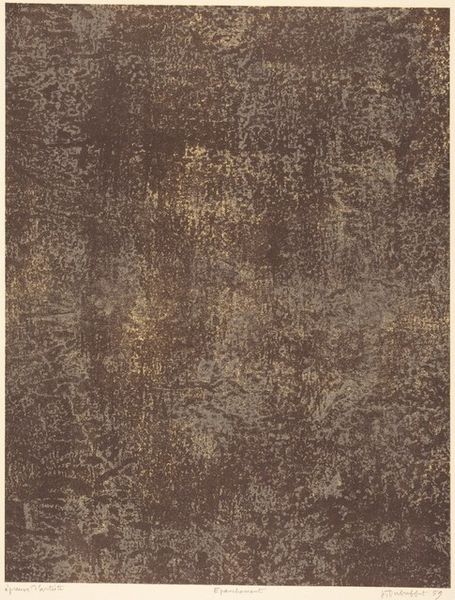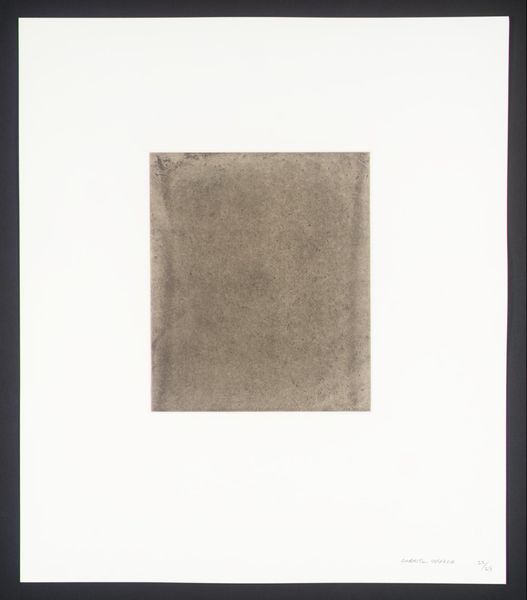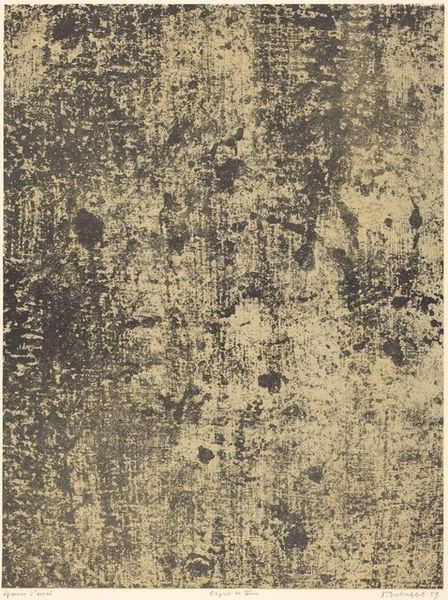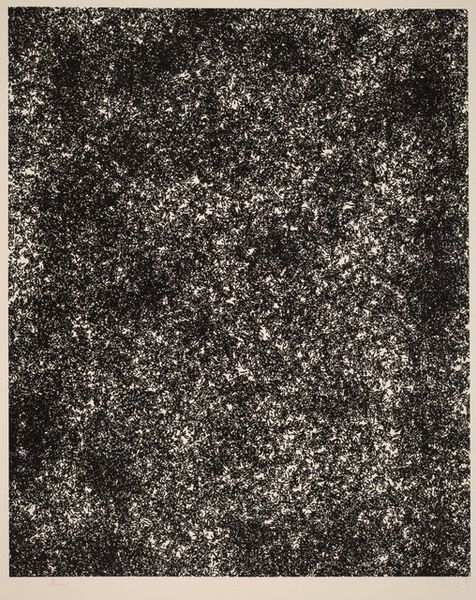
matter-painting, print, paper, graphite
#
abstract-expressionism
#
matter-painting
# print
#
paper
#
abstraction
#
graphite
#
monochrome
Copyright: National Gallery of Art: CC0 1.0
Curator: Up next, we have Jean Dubuffet's "Degradation" from 1959, a matter painting crafted with graphite on paper. What’s your initial take? Editor: Immediately, I see a sort of somber beauty, like staring into a dust cloud or maybe a field after a burn. There’s this… granular texture that feels almost tactile. It's so very brown. Curator: It's fascinating how Dubuffet coaxes such richness out of limited means. The monochromatic palette concentrates our attention on the image's materiality. “Degradation,” while suggestive of decay, actually points toward a layered construction, with meaning unearthed through successive, textured applications. Editor: Exactly. It's an odd contradiction, this "degradation" that looks like potential, like raw material for some unforeseen growth. Reminds me a bit of the alchemical process – destruction as a pathway to something new. Or simply that slow realization we all face when staring in the mirror. It is about to be over for all of us, eventually. Curator: That's a compelling observation. Dubuffet, with his Art Brut sensibilities, often challenged conventional notions of beauty and art. He sought an unmediated, primal expression, something untouched by academic polish. So this sense of decomposition is also liberation from imposed form. He is after a specific thing, I think, an unburdening. Editor: Absolutely. It’s as though he’s saying, “Let’s embrace the messy, the imperfect, the things that are falling apart.” Maybe that's why it draws you in--that whisper of truth in decay, or maybe even a warning of better thing in times past. You look for meaning and history and significance; I just feel things, like dirt beneath my nails. Curator: Well, and the title itself, "Degradation," carries weight, alluding not only to physical breakdown, but perhaps also to the perceived decline of societal values. The period saw rapid technological advancements along with the horrors of recent wars, the piece, so monochrome in appearance, and printed on paper, is an outcry against progress, no? Editor: Possibly! All this darkness speaks to this need to re-evaluate, return to the source. I think the ambiguity is intentional, of course, otherwise we're just reading a manual and that is very bleak to be sure. I enjoy imagining all that dark stuff floating upward, like when the street water bubbles up in the gutter just before the sewer swells open. Beautiful decay! Curator: An unexpectedly beautiful decay! As ever, it seems, looking deeply at even the sparsest composition provides rich interpretative possibilities. Editor: Couldn't agree more. Dubuffet leaves you with the material world but an open ended question, like, “Now what are *you* going to do with this mess?” That alone seems quite enough, for one work of art.
Comments
No comments
Be the first to comment and join the conversation on the ultimate creative platform.
